Chants of Sennaar review
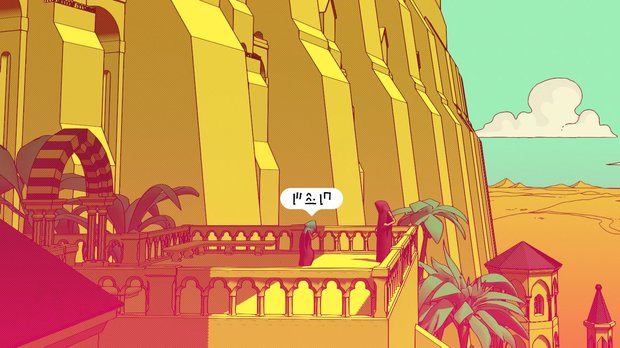
- 1 Comment
We sing the praises of this striking language-based puzzler inspired by the Tower of Babel

Unless you’ve played Chants of Sennaar, you won’t realize that I just insulted you in the language of an ancient priest, and with terrible grammar to boot. I’ll admit, I’m not one who picks up on new languages very quickly. My five years of Spanish classes amount to me being able to say “Yo quiero Taco Bell” and “¿Dónde está el baño?” (“where is the restroom?”) – usually in that order. But in Chants of Sennaar, a point-and-click language-based puzzler by Rundisc, your lack of linguistic prowess may not prove to be much of a barrier. In fact, that’s what the game does so successfully: it takes no less than five different mysterious languages and, over the course of the next eight to ten hours, will give you enough confidence to allow you to start understanding their syntax and translating between them. I suspect that if you are more lexically inclined, the relative hand-holding may leave you craving more challenge, but at least for a plebeian like me, the mystique of exploring an unfamiliar but beautifully rendered world peopled with curious inhabitants that you can barely understand is a novel experience worth chanting about.
If you’re wondering what “Sennaar” is supposed to mean, it comes from the Greek Σεννααρ, which comes from the Hebrew שִׁנְעָר, which when translated back to English is “Shinar,” so welcome to the joy of human languages. In any case, Shinar, according to the biblical story, is the area in ancient Mesopotamia where the Tower of Babel was to be built before God thwarted their efforts of skyline domination by confusing their one language into many, causing them to disperse. While not a direct retelling of this story, the developers have cited the Tower of Babel as their inspiration, and have built on this foundation (pun intended) by expanding on the themes of communication and understanding in a way that feels universal, and at times especially modern.
Speaking of not speaking, you’re told nothing when you start the game about who or where you are, or what your goal is supposed to be, and anyone who would seem likely to help with this matter is unintelligible anyway. You are, and will remain, a nameless person whose face is shrouded beneath a crimson hood, though your purpose will take shape over time. When the story begins, you emerge from what appears to be a stone sarcophagus and start to make your way up a tower so large, I’d imagine they’d have had to dismantle an entire mountain range to build it. Navigation is done through a point-and-click interface (or controller, if you prefer) in 3D environments using a context-sensitive cursor that will let you walk, talk, and interact with objects depending on what you’re hovering over.
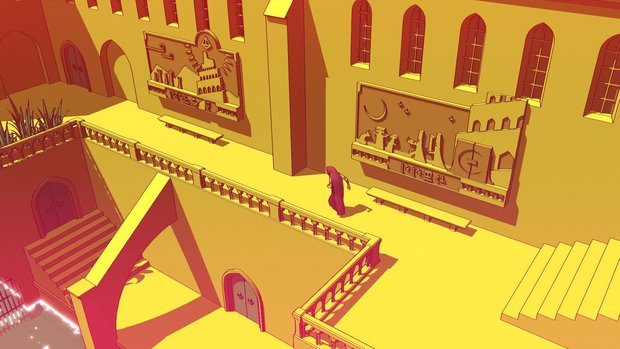
The structure is inhabited with a curious array of folks, all mysteriously masked. They’re grouped distinctly and dwell on different sections of the tower: a religious order of monks and other pilgrims and zealots makes up the lowest level while a militaristic faction lives just above them, and a wealthy class is higher still, absorbed in their arts and leisure. Each group has their own language, and they’ve long since lost the ability to communicate with one another, but it’s clear that the divisions between them go beyond mere practicality. There’s a more fundamental misunderstanding of each other that leads to an undercurrent of mistrust and feelings of superiority as they keep clear borders between them and in some cases subjugate another group. This might sound all too familiar and possibly open the door to something preachy, but the clans are each given a surprisingly fair and sympathetic treatment, though never too much so. Rather than making heavy-handed moral judgments about rich/poor, peaceful/militaristic, or science/religion, each set of people is portrayed with a subtlety that I found disarming, and each can be likable and unlikable in their own ways.
That’s not to say there’s any especially complex characterization going on. After all, when I say that they each have their own “language,” what I mean is that they can each say a little over thirty different words. That may not make them the most prolific conversationalists, but in an adventure game about deciphering language, this seems to be a reasonable amount of vocabulary to puzzle over. When you initially “talk” to people (by clicking on them), they will respond with – naturally enough – what looks like complete gibberish. There isn’t any actual voice acting, just symbols that appear in speech bubbles. Likewise, you might discover these same symbols elsewhere, chiseled in stone above murals or on other signs or objects. The bulk of Chants of Sennaar’s puzzles involve working through these unfamiliar glyphs and discerning their meaning.
If you’ve played Heaven’s Vault, you’ll notice some similarities in the translation mechanics and how the progressive discovery of a language is handled. You keep a journal where you automatically jot down any symbols you find or that are spoken to you (I don’t know how that makes sense either, but it’s a game, okay?), and when you think you have an idea what one of them means, you can open your journal and type in your guess. With that done, whenever you subsequently encounter that word in the wild, it will appear captioned with whatever you typed in, though displayed in gray, indicating it’s only a guess at this point.

At various times you’ll also automatically sketch out a page of images representing certain concepts, people, or places you encounter, such as an image of someone opening something, or a map with certain buildings drawn on it. You can then validate your understanding of the language by assigning a symbol to the corresponding image you think it represents. The game won’t initially tell you whether you’re right or wrong until you’ve assigned a whole page worth of images (usually four or five). If you’ve made a mistake somewhere, then nothing happens. But if you get each one on that page correct, they become locked into place and you know that you’ve correctly translated them. Now when you come across that symbol elsewhere, the captions are displayed in white, letting you know that the translation has been validated.
Unless linguistics is already a subject that interests you, this might sound dry at first, like an edutainment game of Duolingo, but I actually found it quite engaging and rewarding. When you enter an area where a new language is spoken, it starts out slightly overwhelming as you wander the foreign streets, understanding nothing, but those bursts of insight as you deduce what a word means from surrounding environmental clues are satisfying. Filling in the language allows you to begin to understand what people have been babbling to you about, and there’s also an anthropological curiosity that’s fostered as you slowly uncover the history of the tower and the culture of the people and how they think. One clan might use a negative word to describe something that another clan treats more matter-of-factly, and this can aid in comprehending what drives each group and how they view the world.
It’s ultimately not as deep or as lore-rich as Heaven’s Vault, and the difficulty is lowered by how much guessing you can successfully do. There were times when I knew what a couple of words meant and was able to assign them to images on the journal page, but with one remaining image, I just plugged in a couple of (un)educated guesses until it clicked and was validated. In other instances when I guessed the correct symbol/image connection immediately, I was sometimes surprised at the English word that appeared as its translation. I had somewhat misinterpreted what the image was actually depicting, but the game was ready to fill in those gaps for me. While I occasionally wished for a little more challenge in this regard, I was happy that the smoother difficulty curve allowed me to enjoy moving through the story without feeling bogged down.
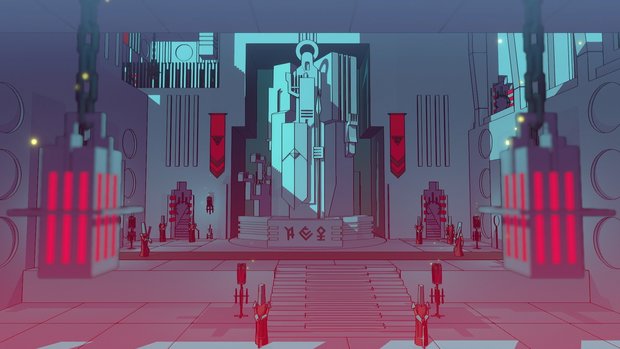
Progress to the next area will be gated (sometimes literally) by a handful of puzzles that call for enough mastery over the language to be able to understand and complete them. There might be a device or code or maze of some kind that will entail an understanding of labels or written instructions to be able to work them out. By far my favorite puzzles involve translating between members of different clans who are attempting to communicate with each other. This not only requires you to have completed at least the majority of the vocabulary of the separate languages, but also understand their syntax – how they order their words and handle plurals, for example – in order to successfully communicate. And the reward feels greater than just opening the next door; you get to take part in the building of bridges between alienated people.
Not every puzzle is about language, as there are a few scattered logic brain teasers, including a rather-out-of-place-but-perfectly-fine Rush Hour-style sliding block puzzle with wooden carts. There are also some stealth sections, particularly prevalent when you’re in the warriors' domain, which help change the pace and introduce some tension, even though the cost of being seen is just going back to the start of the screen and trying again. The gameplay here is not really all that deep and is more of an interlude than core gameplay, but I didn’t mind the variety and it helped the world feel a little more dynamic as well.
But whether you’re solving puzzles, sneaking around, or just meandering through the large areas, the experience is significantly bolstered by the fantastic art direction. Black outlines surround solid washes of color in a way that immediately reminded me of the French cartoonist Moebius (whose art has seemed popular lately, with games like Sable prominently featuring that same inspiration). But Chants of Sennaar does a great job making the look its own. The blend of various ancient styles of architecture and characters with unusual fashion sense are surreal in the best way. Most of the time the camera is zoomed way out and up, giving an angled bird’s-eye view of the individual structures and features of the colossal tower. The default settings have the color saturation maxed out, which certainly makes for striking, vibrant pastel environments, although I thought the first area was just a little too yellow, and it almost made my eyes ache after a while, so adjusting it down to softer hues looked better to me. I did pop it right back up once I moved on to other regions, though.
The music by Thomas Brunet is very good as well, mixing a classical orchestral soundtrack composed of violin, cello, woodwinds, and even some vocals, with more exotic sounds that resemble (or perhaps actually are) ancient instruments of the Mediterranean and Middle East. It really nails the atmosphere and is one of the best soundtracks I’ve heard this year. Even so, sometimes the score drops out entirely to let the ambient sounds breathe, and I found this quite effective as well. The way the footsteps pierced the silence and seemed to reverb off vast stone walls drew me into the environment in a way that was both peaceful and vaguely unsettling.
While I loved exploring each section of the tower, which are all distinct in their design and coloring, the one caveat is that getting lost is something you’ll likely experience quite often. The levels of the tower are pretty large, and there are usually multiple exits in each scene. When you move from one screen to the next, the camera will change perspective to a new angle, and you’ll start to lose your sense of orientation. Coupled with signs that have words which mean nothing to you, it makes each visit to a new area feel like stepping into some foreign city with no directions, especially since you don’t really know where you’re trying to go anyway, other than up, generally. There is no map feature, and yet within a few minutes in each section, I started to get the hang of it, even if I still occasionally made a wrong turn.
There’s a compelling mystery to the whole narrative, even though it’s not one that’s explicitly … er, spelled out. Little bits of information are presented here and there, stringing you along and letting you linger over your own unanswered questions. You might stumble upon a strange door in some back alley and wonder where it might lead, or find an unusual mural with images or markings that you can’t quite make sense of, but there’s nothing much to do about it, so you continue onwards and upwards. Towards the end there are some fascinating revelations about the tower and the world, and you’ll have a chance to revisit some of these places with newfound knowledge (and even more questions). However, I couldn’t help but feel like the story was in a hurry to wrap up. Even the puzzles at this stage are less intricate than they were earlier, so although the pace understandably quickens in the climactic scenes, it felt like I was fast-forwarding the third act right when I wanted to linger and discover more about what I’d learned, or be given a more challenging final test of my now incredible linguistic skills (cue Spanish teacher’s eye-roll). Even so, while not a flawless finish, it’s still a satisfying and uplifting conclusion to one of my favorite game experiences this year.
Final Verdict
When it comes down to it, Chants of Sennaar is really speaking my language. When you eloquently combine the exploration of a mysterious but beautiful world with a nonlinear but interlocking system of logical puzzles, and bathe all of that in an alluring art style and evocative music, it’s a game designed to call out to me. Learning about each of the enigmatic cultures of the tower and their histories was a powerful motivation for the linguistic mechanics, and the way the puzzles are tuned to keep you moving and gaining confidence with the languages without feeling overwhelmed made me wonder if something like this was a feasible path forward for learning real-world languages. While there were some pacing issues towards the end, and not all of the stealth sections or side puzzles are as compelling as the game’s main focus, that certainly won’t stop me from enthusiastically recommending this uniquely engaging experience. I guess the team at Rundisc must communicate pretty well with each other, because I’d consider what they’ve built here to be a towering success.
Hot take
It might feel bewildering at first, but deciphering glyphs to discover more about the vibrant and mysterious tower with its culturally divided people makes Chants of Sennaar a highly engaging and ultimately rewarding framing for the inventive language-based puzzles.
Pros
- Many-layered linguistic puzzles are a delight to solve
- Striking art and music are both excellent and set a great atmosphere
- Individual tower levels are unique and beg to be explored
- Slowly unfolding story is thought-provoking and at times even moving
- Some stealth sections and side puzzles add variety
Cons
- Traversing such large areas can be disorienting at first
- Quick pacing at the end left me wishing there was a bit more
Brian played Chants of Sennaar on PC using a review code provided by the game's publisher.








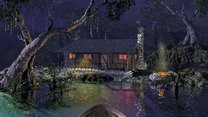
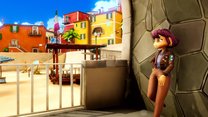
1 Comment
Want to join the discussion? Leave a comment as guest, sign in or register in our forums.
I would not have considered picking up this game, but your review negotiated a place on my wishlist for it!
Reply
Leave a comment